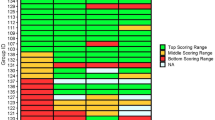Abstract
A course in system dynamics has been included in the first year of our university’s six-year medical curriculum. System Dynamics is a discipline that facilitates the modelling, simulation and analysis of a wide range of problems in terms of two fundamental concepts viz. rates and levels. Many topics encountered in the medical school curriculum, from biochemistry to sociology, can be understood in this way. The course was introduced following a curriculum review process in which it was concluded that knowledge of systems would serve to enhance problem-solving skills and clinical reasoning. The specific characteristics of system dynamics, the widespread use of digital computers, and the availability of suitable software made it possible to introduce the course at this level. The syllabus comprises a brief review of relevant mathematics followed by system dynamics topics taught in the context of examples, which are primarily but not exclusively medical. It is anticipated that this will introduce new thought processes to medical students, including holistic thinking and improved graphical visualisation skills.




Similar content being viewed by others
References
Dienstag, J. L. (2008). Relevance and rigor in premedical education (including supplement: Report of the Working Group on Admission Requirements, Harvard Medical School, August 9, 2004). New England Journal of Medicine, 359, 221–224.
Forrester, J. W. (1961). Industrial dynamics. Cambridge, Massachusetts: MIT Press.
Forrester, J. W. (1968). Principles of systems (2nd Preliminary Edition). Cambridge Massachusetts: MIT Press.
Forrester, J. W. (1969). Urban dynamics. Cambridge, Massachusetts: MIT Press.
Gallaher, E. J. (1996). Biological system dynamics: From personal discovery to universal application. Simulation, 66, 243–357.
Goodman, M. R. (1974). Study notes in system dynamics. Cambridge, Massachusetts: Wright-Allen Press.
Hargrove, J. L. (1998). Dynamic modelling in the health sciences. Berlin: Springer.
Homer, J. B., & Hirsch, G. B. (2006). System dynamics modeling for public health: Background and opportunities. American Journal of Public Health, 96(3), 452–458.
Author information
Authors and Affiliations
Corresponding author
Rights and permissions
About this article
Cite this article
Rubin, D.M., Richards, C.L., Keene, P.A.C. et al. System dynamics in medical education: a tool for life. Adv in Health Sci Educ 17, 203–210 (2012). https://doi.org/10.1007/s10459-010-9237-4
Received:
Accepted:
Published:
Issue Date:
DOI: https://doi.org/10.1007/s10459-010-9237-4




